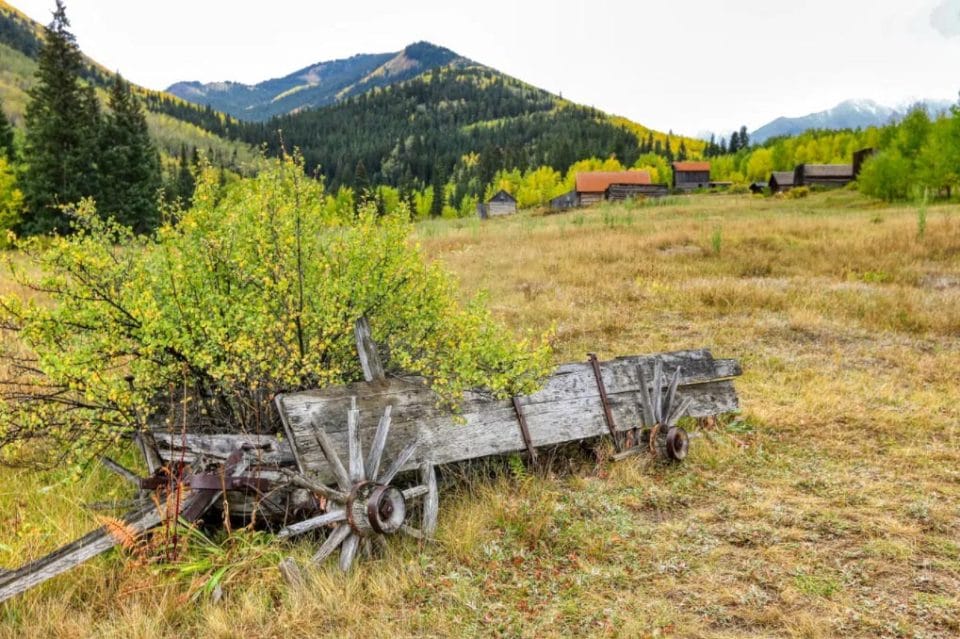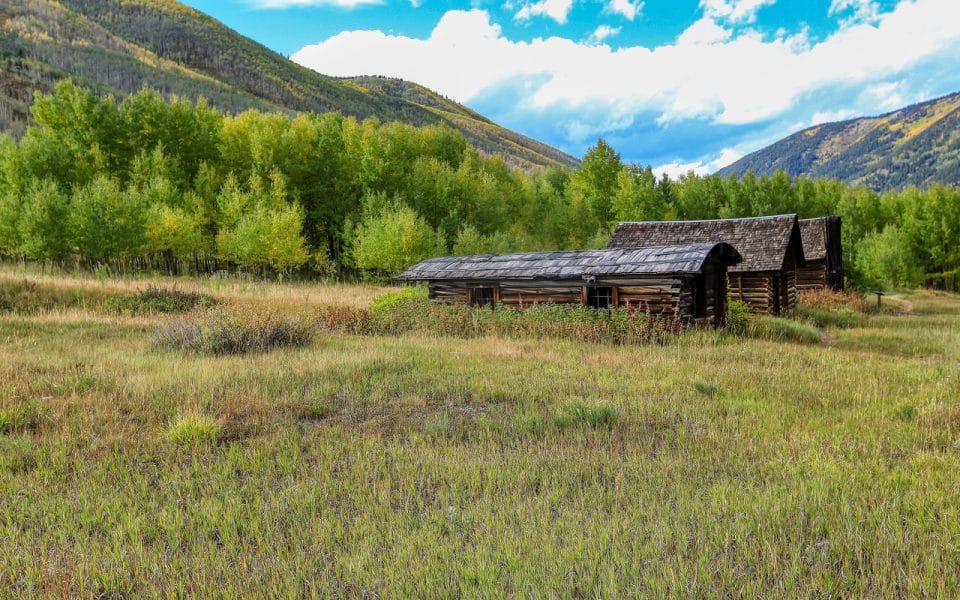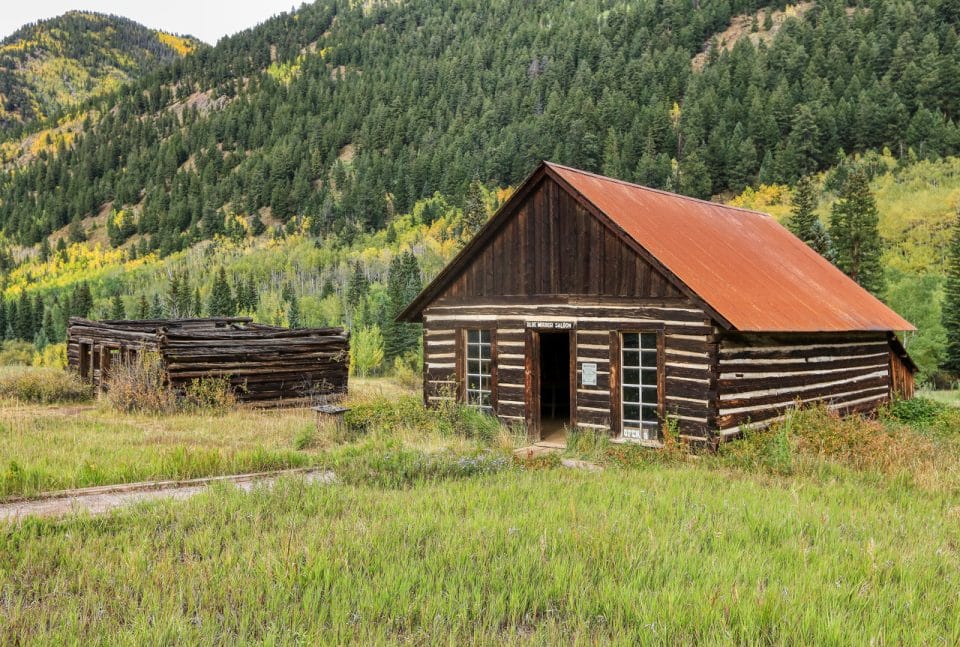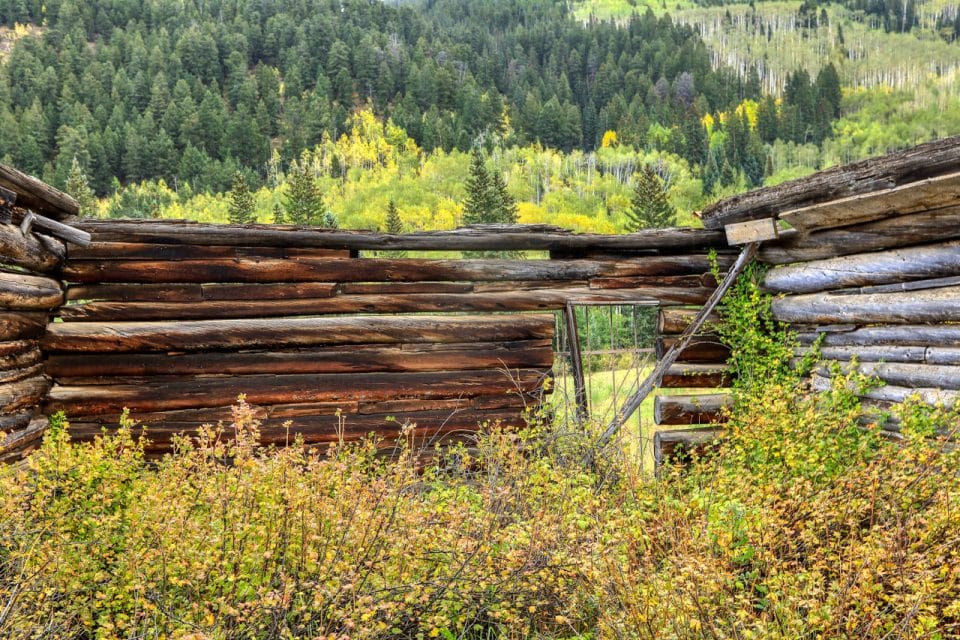 Welcome Wagon: A broken down wagon sits near the town of Ashcroft, Colo., succumbed to growth of trees and grasses while sitting idle for decades. The buildings in the background are remains of the once thriving mining town. Photo by Gary Warren/ladailypost.com
Welcome Wagon: A broken down wagon sits near the town of Ashcroft, Colo., succumbed to growth of trees and grasses while sitting idle for decades. The buildings in the background are remains of the once thriving mining town. Photo by Gary Warren/ladailypost.com
 Ashcroft: A row of buildings that were homes to miners sit in various stages of decay in Ashcroft, Colo. The silver mining boom beginning in the area in 1880 only lasted about five years before workers moved on and left the town. At its peak, more than 2,000 people resided and worked in Ashcroft. Photo by Gary Warren/ladailypost.com
Ashcroft: A row of buildings that were homes to miners sit in various stages of decay in Ashcroft, Colo. The silver mining boom beginning in the area in 1880 only lasted about five years before workers moved on and left the town. At its peak, more than 2,000 people resided and worked in Ashcroft. Photo by Gary Warren/ladailypost.com
By GARY WARREN
Photographer
Formerly of Los Alamos
We love to travel the back roads of Colorado and visit the small towns and learn about their history. One can find these towns scattered from the plains of eastern Colorado to the most unlikely locations in the mountain region of the state.
Many of the early mountain towns were a result of the mining industry which was prominent in the 1800s and brought many prospectors to the state during that time. Some of the old mining towns have survived and now proper as popular vacation destinations such as Breckenridge, Aspen, Crested Butte and others. However, many of the old mining towns are gone or what is left is a ghost town consisting of a few buildings and possibly, some old mining equipment.
We enjoy exploring the old mining towns. It is fun to walk among the old buildings and mines as we try to imagine what life must have been like for the brave individuals and families who lived there well over a hundred years ago. Life was not easy in some of the remote mountainous locations.
Some of these mining towns require four-wheel drive across some rocky and unforgiving mountain roads while some of the old towns have been preserved and are usually much easier to reach by car. One such town, Ashcroft, Colo., exists about 10 miles south of Aspen. Colo. and is easily reached by any vehicle.
Ashcroft was first settled in 1880 when silver was discovered in the Castle Creek Valley. The town was established and grew quickly to a population of over 2,000 by 1883. At that time, Ashcroft was larger than Aspen. However, the silver mining boom was short lived and by 1885 only about 100 summer residents remained in Ashcroft.
Today, the ghost town of Ashcroft is maintained by the Aspen Historical Society. The remaining buildings are in various states of repair or disrepair. Most of the town is gone but some structures have been maintained for visitors to safely enter and others have been maintained or braced enough to prevent total collapse.
The ghost town of Ashcroft was added to the National Register of Historic Sites in 1975.
Editor’s note: Longtime Los Alamos photographer Gary Warren and his wife Marilyn are traveling around the country, and he shares his photographs, which appear in the “Posts from the Road” series published in the Sunday edition of the Los Alamos Daily Post.
 Post Office: A small Post Office sign can be seen above the left window of what used to be the Ashcroft, Colo. Post Office. The dried and weathered planks are what is left of the once bustling building. Photo by Gary Warren/ladailypost.com
Post Office: A small Post Office sign can be seen above the left window of what used to be the Ashcroft, Colo. Post Office. The dried and weathered planks are what is left of the once bustling building. Photo by Gary Warren/ladailypost.com
 Hotel: Structural remains of the entrance area to the Hotel View in the center of Ashcroft, Colo. While some restoration has helped the building survive, the overall condition of this old hotel is surprisingly stout. Some buildings in the town are open for visitors to enter and others are closed for safety reasons. Photo by Gary Warren/ladailypost.com
Hotel: Structural remains of the entrance area to the Hotel View in the center of Ashcroft, Colo. While some restoration has helped the building survive, the overall condition of this old hotel is surprisingly stout. Some buildings in the town are open for visitors to enter and others are closed for safety reasons. Photo by Gary Warren/ladailypost.com
 Saloons: The Blue Mirror Saloon, right, is another building in Ashcroft, Colo. that has been maintained and restored for visitors to check out. Items and information from Ashcroft’s mining days are displayed in the old saloon. A second saloon has been left to age and short log walls are all that remain of this structure. Photo by Gary Warren/ladailypost.com
Saloons: The Blue Mirror Saloon, right, is another building in Ashcroft, Colo. that has been maintained and restored for visitors to check out. Items and information from Ashcroft’s mining days are displayed in the old saloon. A second saloon has been left to age and short log walls are all that remain of this structure. Photo by Gary Warren/ladailypost.com
 Walls: Weeds and bushes now occupy this old saloon in Ashcroft, Colo. This is the structure that was shown above, which sits next to the Blue Mirror Saloon building. As was the case in many old mining towns, there were more than a dozen saloons in the small town during its peak years. Photo by Gary Warren/ladailypost.com
Walls: Weeds and bushes now occupy this old saloon in Ashcroft, Colo. This is the structure that was shown above, which sits next to the Blue Mirror Saloon building. As was the case in many old mining towns, there were more than a dozen saloons in the small town during its peak years. Photo by Gary Warren/ladailypost.com

